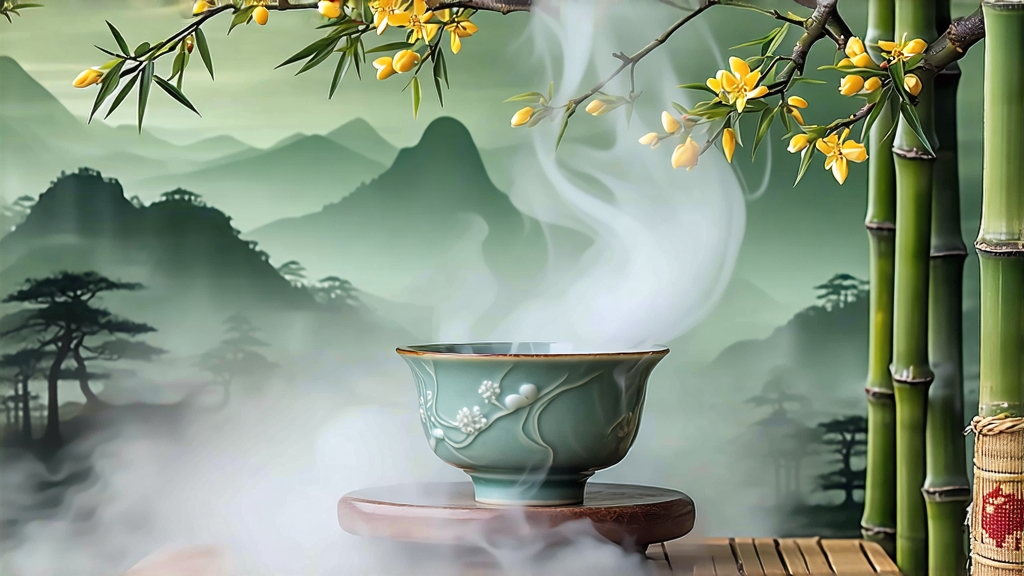
Meng Ding Huang Ya, literally “Yellow Bud from Meng Summit,” is the least-known yet most aristocratic member of China’s yellow tea family. While green tea commands global fame and pu-erh fills investment portfolios, this downy bud tea survives as a whispered legend along the misty ridges of Ya’an, Sichuan. International drinkers rarely encounter it; even inside China annual production seldom exceeds fifteen metric tons. Yet for more than twelve centuries its name has appeared in imperial tribute lists, Buddhist temple records, and the travel diaries of Tang dynasty poets. To understand Meng Ding Huang Ya is to witness a living fossil of Chinese tea art, a beverage whose very color embodies the moment when green becomes gold.
History: from tribute to near extinction
The first written mention dates to 724 CE, when the monk Wu-li-te presented “meng-shan sweet buds” to Emperor Xuanzong. The court declared the tea a “mountain elixir,” and annual levies were fixed at three hundred catties picked before the Qingming festival. Song dynasty bureaucrats refined the levy into a strict seven-day plucking window; Ming scholars celebrated the leaf in stele inscriptions; Qing merchants sealed it in lead-lined boxes for the 3,000-kilometre caravan to Tibet, exchanging it for warhorses. By the 1930s the mountain’s monasteries had lost patronage, tea gardens reverted to forest, and the craft disappeared into folk memory. A 1958 government restoration project located three aged artisans who still remembered the “sealed yellowing” technique; cuttings from the original mother trees were propagated, and a tiny state workshop revived the tea for foreign dignitaries. Today only five licensed families on Meng Ding Mountain are authorised to sell leaf under the protected geographical indication “Meng Ding Huang Ya,” making each harvest a time-capsule of Tang dynasty taste.
Terroir: where Sichuan cloud meets Yarlung fog
Meng Ding summit rises 1,456 m above the western edge of the Sichuan basin. The mountain forms a natural barrier against the moist monsoon rolling off the Indian Plateau, trapping perennial fog that reduces direct sunlight to four hours a day. The soil is a crumbly quartz-rich yellow loam, slightly acidic (pH 5.2) and laced with selenium leached from ancient granite. Temperature fluctuates 10 °C between day and night even in late March, forcing the tea bush to synthesise extra theanine and aromatic esters. Local proverb says “one bud, one droplet of cloud,” referring to the visible condensation that forms on the pubescent tip of each new shoot. Such conditions cannot be replicated elsewhere; attempts to transplant the cultivar to lowland Ya’an produced green tea of respectable quality but none of the characteristic “yellow brightness” that gives the tea its name.
Cultivar: the old “sweet water” clone
The plant itself is a Camellia sinensis var. sinensis landrace nicknamed “xian-shui” (sweet water) by villagers. Its leaves are unusually small—an average spring bud is only 18 mm long and 6 mm wide—yet thick and leathery, capable of withstanding the repeated rolling and gentle smothering that define yellow tea processing. The bush flowers sparingly, directing nutrients into fewer, more concentrated shoots. DNA fingerprinting by the Tea Research Institute of Sichuan Academy shows a unique allele on chromosome 7 linked to slow chlorophyll degradation, the biochemical key to the yellowing step.
Craft: the art of men-huang, sealed yellowing
Meng Ding Huang Ya is made only from the unopened bud or, in the premium “needle” grade, the bud plus half-open first leaf. Picking begins when 5 % of the mountain’s tea bushes show the “sparrow’s tongue” profile, usually between 20 March and 2 April. Leaves are carried in bamboo baskets lined with fresh fern fronds to prevent compression bruising. Within two hours of plucking the buds are spread 3 cm thick on woven rattan trays and withered for 90 minutes at 28 °C; this brief wilting reduces moisture to 68 % and initiates enzymatic quieting.
Next comes the kill-green, but here the resemblance to green tea ends. A 160 °C drum roaster fixes the bud for exactly 75 seconds—just long enough to halt oxidative enzymes yet preserve a faint halo of green in the centre.